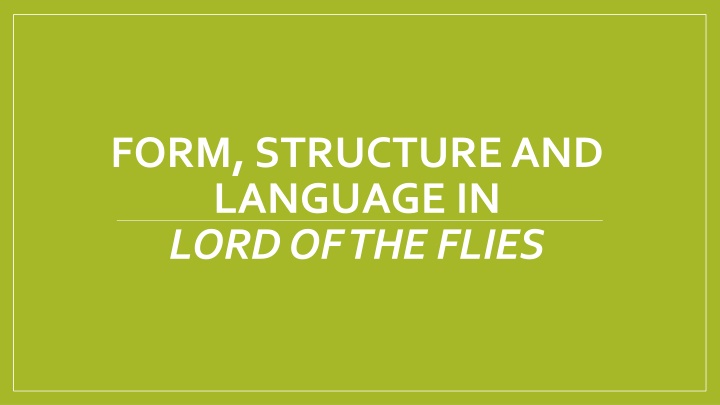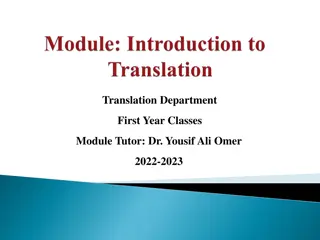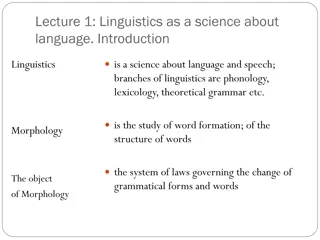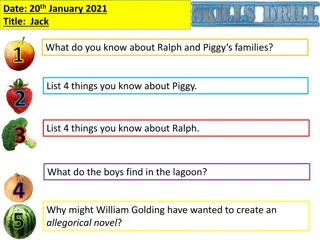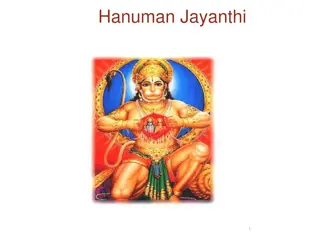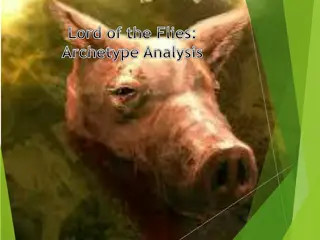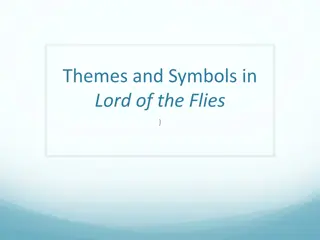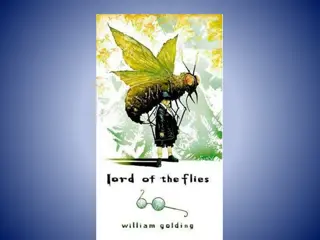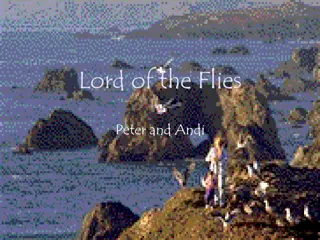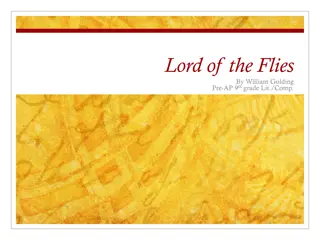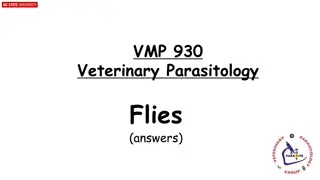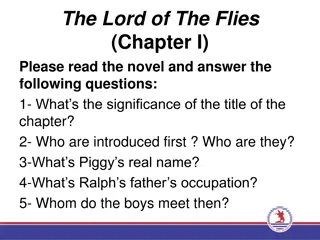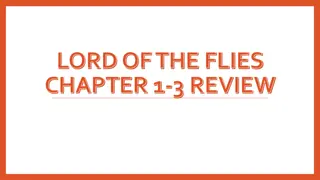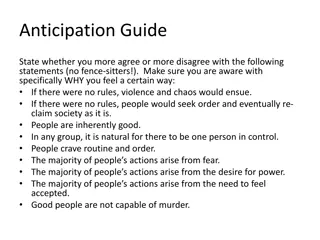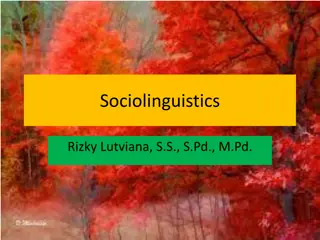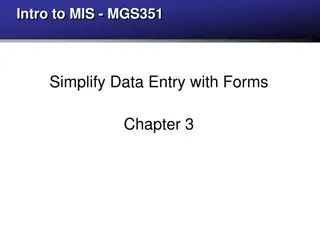Form, Structure, and Language in Lord of the Flies
Explore the language, imagery, and natural imagery used by William Golding in "Lord of the Flies." Discover how Golding incorporates animalistic metaphors to portray the characters and the island environment, enhancing the depth of the narrative through personification and vivid descriptions.
Download Presentation

Please find below an Image/Link to download the presentation.
The content on the website is provided AS IS for your information and personal use only. It may not be sold, licensed, or shared on other websites without obtaining consent from the author.If you encounter any issues during the download, it is possible that the publisher has removed the file from their server.
You are allowed to download the files provided on this website for personal or commercial use, subject to the condition that they are used lawfully. All files are the property of their respective owners.
The content on the website is provided AS IS for your information and personal use only. It may not be sold, licensed, or shared on other websites without obtaining consent from the author.
E N D
Presentation Transcript
FORM, STRUCTURE AND LANGUAGE IN LORD OF THE FLIES
Language - Imagery Imagery is the general term covering the use of literary devices which encourage the reader to form a mental picture in their mind about the way something or someone looks, sounds, behaves, etc. The language used often relates to one or more of our five senses. The most common literary devices which come under this heading are simile, personification and metaphors.
Where andhowdoes Golding use natural imagery in Lord of the Flies? Images of nature, particularly animals, appear throughout the novel, forming a deliberate pattern. Many of the boys are described using animal-like behaviouror appearance especially as they become more savage. Golding generally uses similes for these comparisons as he wants to compare a specific aspect of the character to the animal in question.
'Ralph launched himself like a cat.' This emphasizes Ralph s agility and athletic ability Ralph This shows that Jack has descended into a primitive state. He is powerful but he has no human sense of right or wrong he simply wants power. 'Authority sat on his shoulder and chattered in his ear like an ape.' Jack 'The two boys...flung themselves down and lay grinning and panting at Ralph like dogs.' Sam and Eric The twins are compared to a pair of overgrown puppies looking eagerly at their master. They will beloyal to Ralph throughout the novel. Then you don t know how many of us there ought to be? How could I with them little uns running round like insects? Piggy tries to count the younger boys but they are constantly moving around like annoying insects. This foreshadows the later scene with the flies buzzing around the pig s head. The littluns
Natural images are also used in descriptions of the island and its environment. Golding frequently uses personification in this aspect of his writing. Image Analysis 'Now he saw the landsman s view of the swell and it seemed like the breathing of some stupendous creature.' Ralph looks out to sea and thinks of it as an unspecified animal (perhaps the Beast). Although the sun can be warm and comforting. These images emphasize the intense heat acting like a weapon on the boys. The sea The heat'He knelt down and thearrow of the sun fell on him.'
"A flurry of wind made the palms talk and the noise seemed very loud now that darkness and silence made it so noticeable." Pg 96 He is using personification in this sentence saying that the palms are talking in the darkness of the night. The way he is trying to make nature talk by using personification sets the mood as much more mysterious and spooky.
'The wind came again, stronger now, cuffing the forest heads till theyducked and roared.' Like the heat, the wind also attacks and hurts. The forest responds like a wounded animal. The wind The descriptions of the forest make it seem as though it is a living breathing thing with feelings and emotionsof its own. This makes the forest seem alive and sinister. 'The whole thicket bent and the roots screamed as they came out of the earth together .' The forest 'The flames, as though they were a kind of wild life, crept as a jaguarcreeps on its belly toward a line of birch-like saplings that fledged an outcrop of the pink rock.' The forest fire accidentally started by the boys turns into a much larger and more ferocious beast (a jaguar)creeping up on them and ready to kill. The fire
Tell us about the snake-thing. Now he says it was a beastie. Beastie? A snake-thing. Ever so big. He saw it. Where? In the woods. Either the wandering breezes or perhaps the decline of the sun allowed a little coolness to lie under the trees. The boys felt it and stirred restlessly
Im cold. So m I. Besides, it s Syntax Note how Golding has the twins speak. They finish each other s sentences which is reflected in the dialogue dark. All right, then. Eric squatted back and watched Sam make up the fire. He built a little tent of dead wood and the fire was safely alight. That was near. He d have been Waxy. Huh.
Syntax Note how the boys speak versus the narrator. The boys are still young and innocent and their dialogue lends realism to the story. They use slang consistently. This is meant to contrast with the sophisticated vocab the narrator uses.
